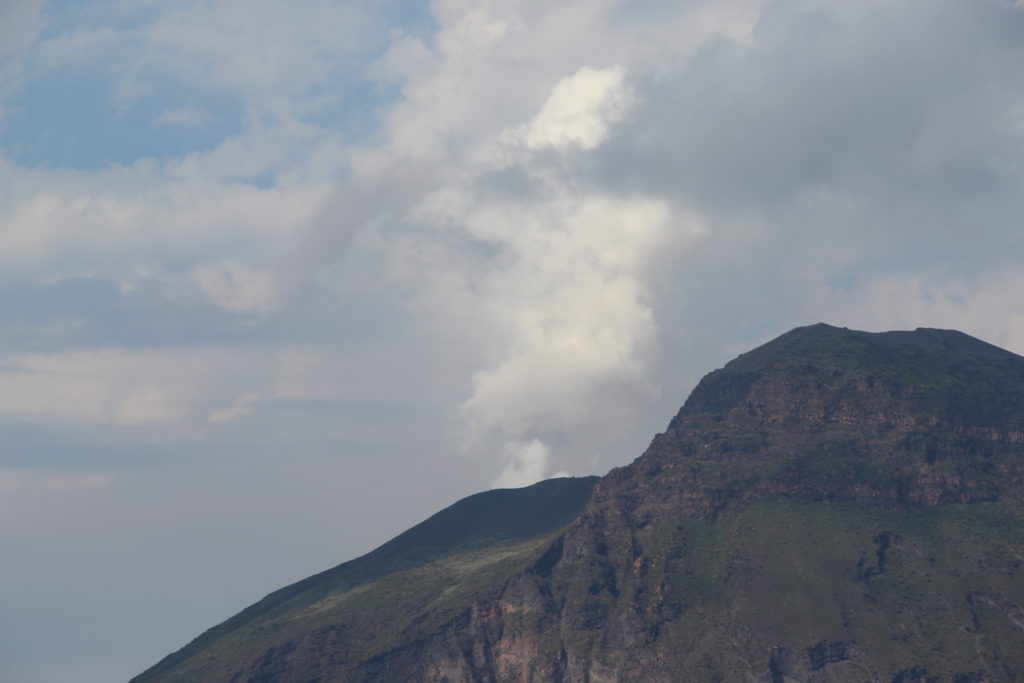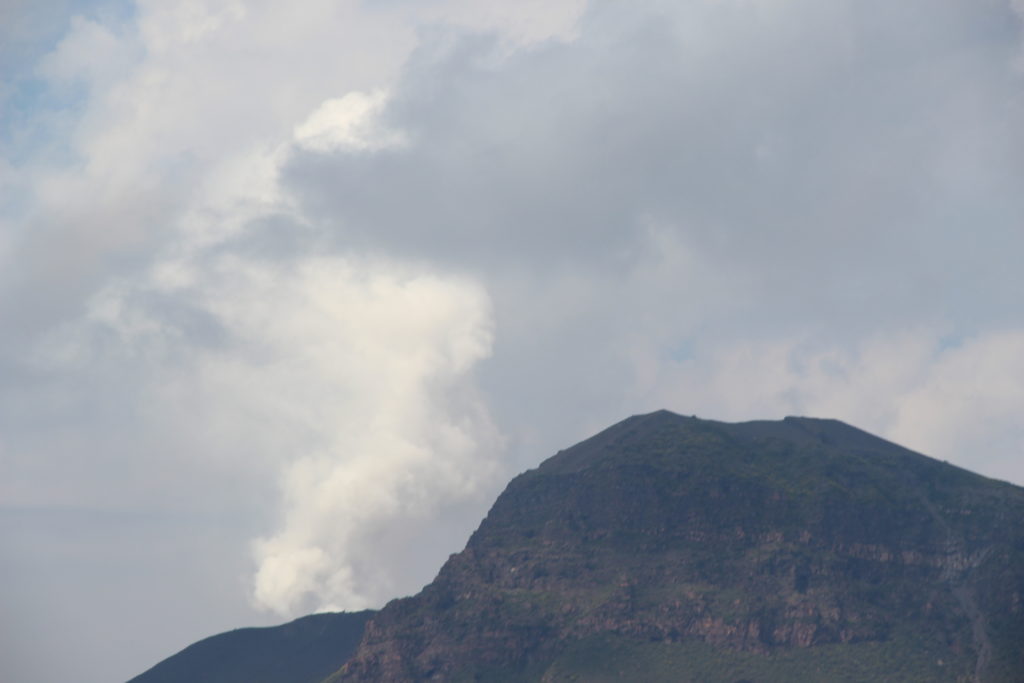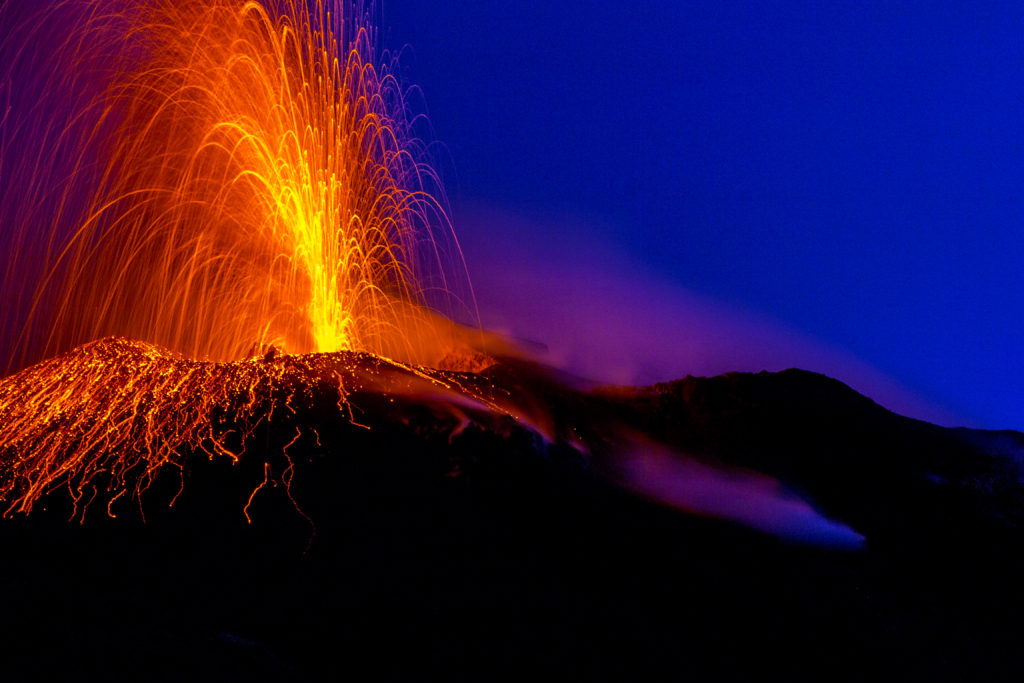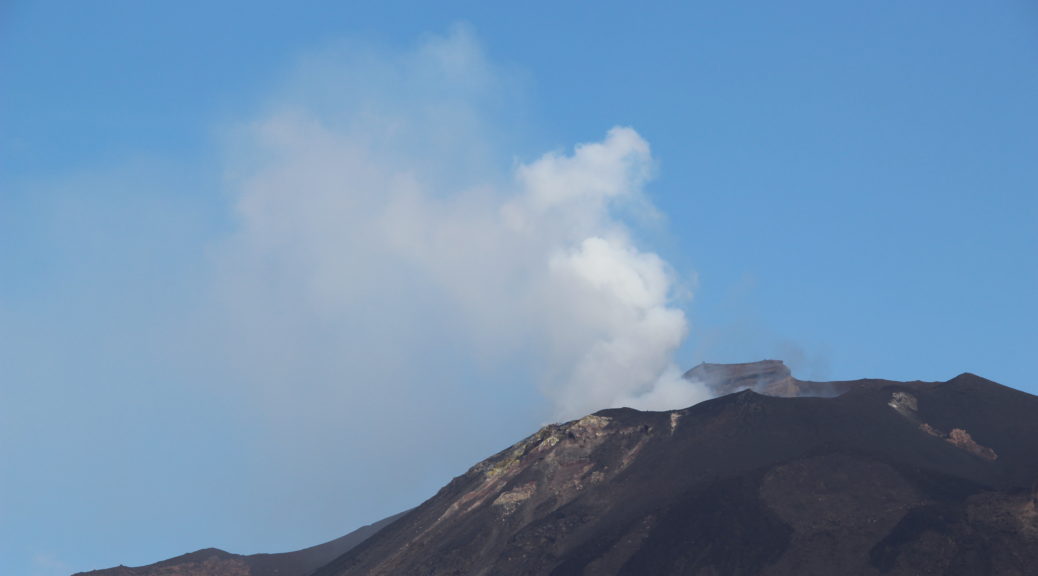
Stromboli and Lipari
Back on board the Le Ponant, the sails were raised for the first time on our cruise. We had been at Tall Ships in Chicago and saw sails raised with ropes. On the Le Ponant, this process was mechanical – but still a beautiful site! When attending the briefing given by our tour directors, we learned that we would be passing the island of Stromboli overnight. Stromboli is home to a “constantly active volcano” and I decided to set my alarm for the approximate time we would pass Stromboli in case the volcano was spouting lava. Well, no such luck. My husband and I went to the top deck and watched for smoke or lava but saw neither. We did see the sails lit with spotlights and a beautiful sunrise. A couple hours later, we enjoyed breakfast (as we did every morning on the cruise) in the open air.
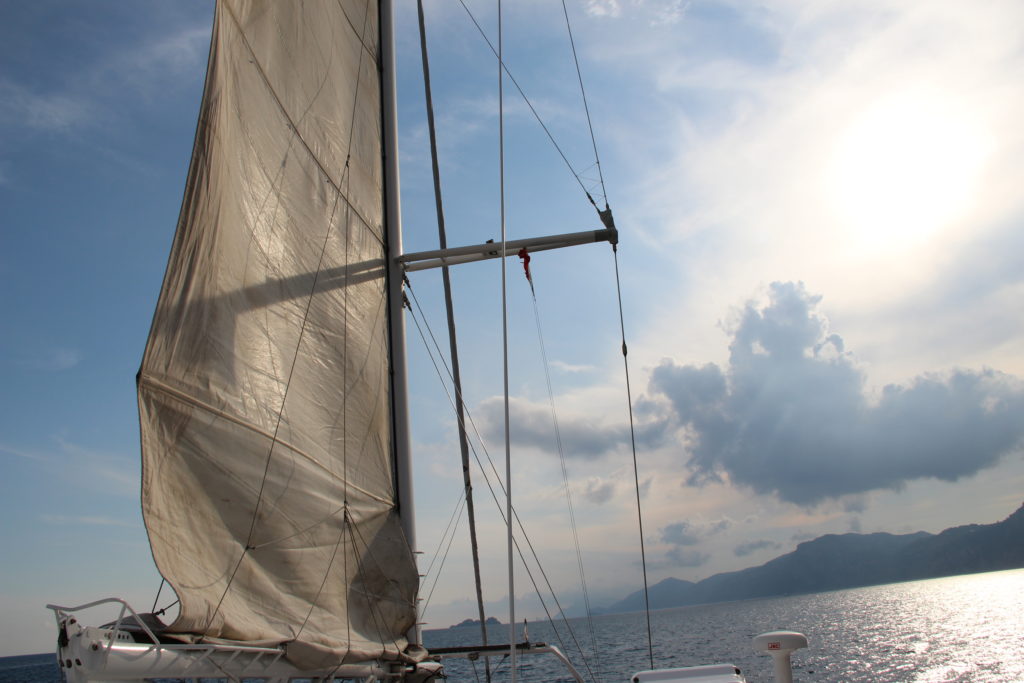
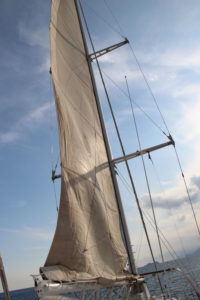
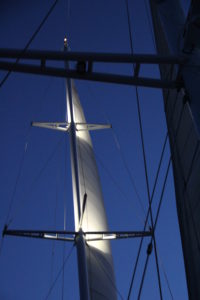
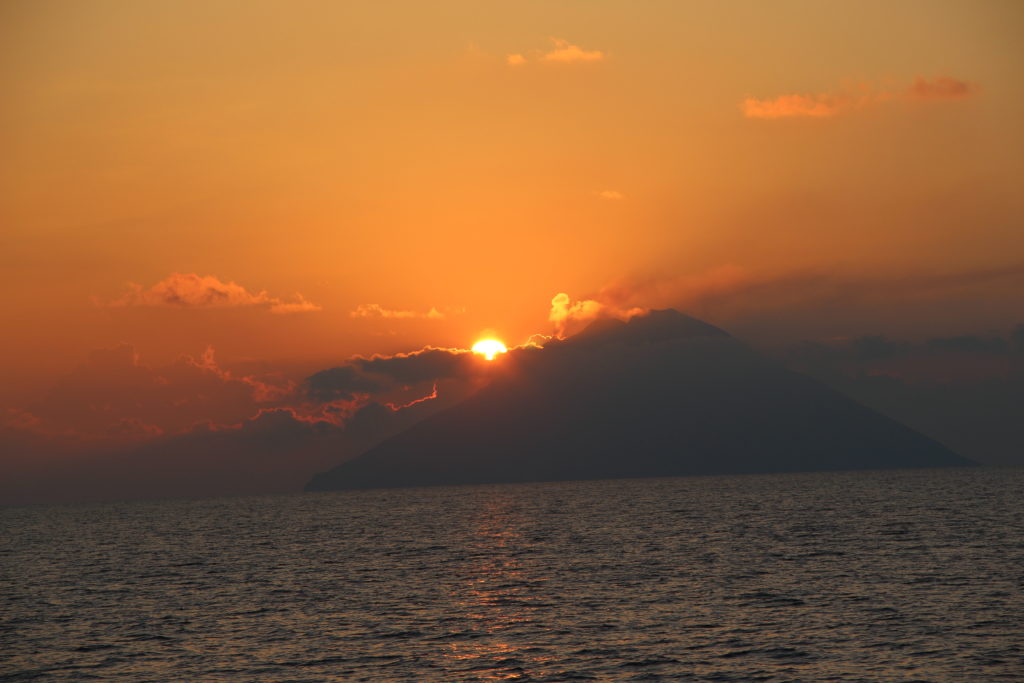
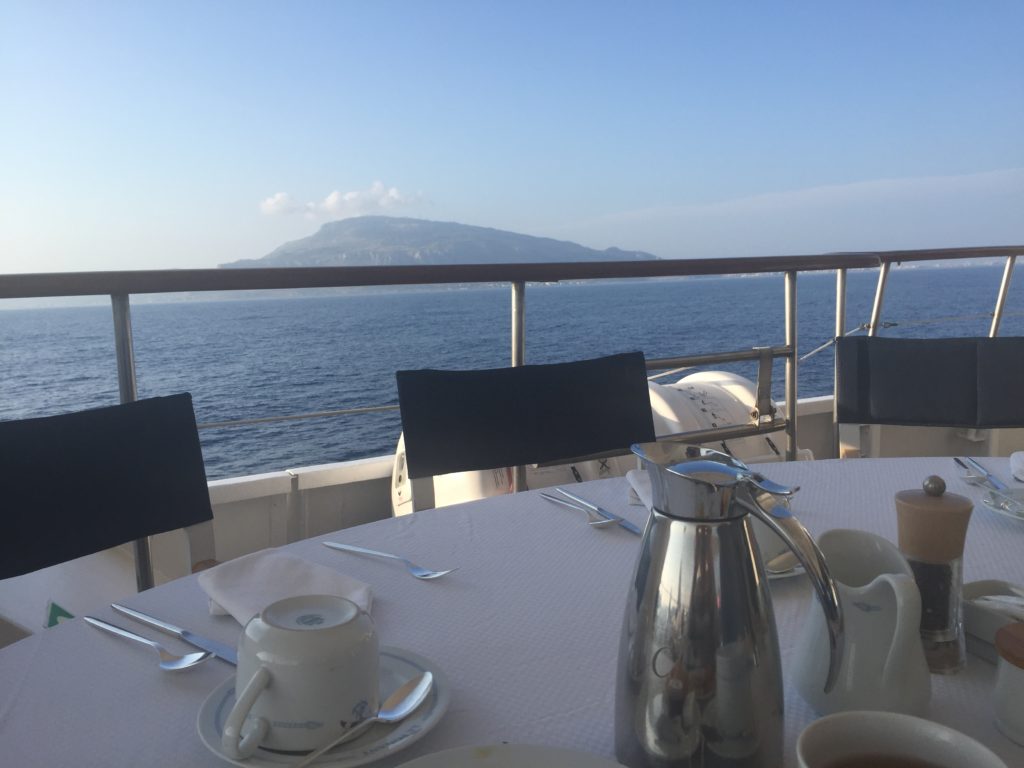
After breakfast, we took a zodiac to the island of Lipari. Some of the crew went to Lipari earlier and bought local food that would be served later at lunch and dinner – including a tuna which will be served back on board at a barbecue lunch. Lipari is the largest of the Aeolian Islands. It is north of Sicily and between Mt. Vesuvius and Mt. Etna. Geologists believe it was created as a result of volcanic activity.
We walked around the town, seeing shops that sold food and souvenirs, especially jewelry made of obsidian. The last picture is of a caper plant. They are native to this area. The unopened flower bud looks a little like a pea and provides flavor as an added ingredient in foods like appetizers, salads and pastas. If the capers are not picked, they will become beautiful flowers.
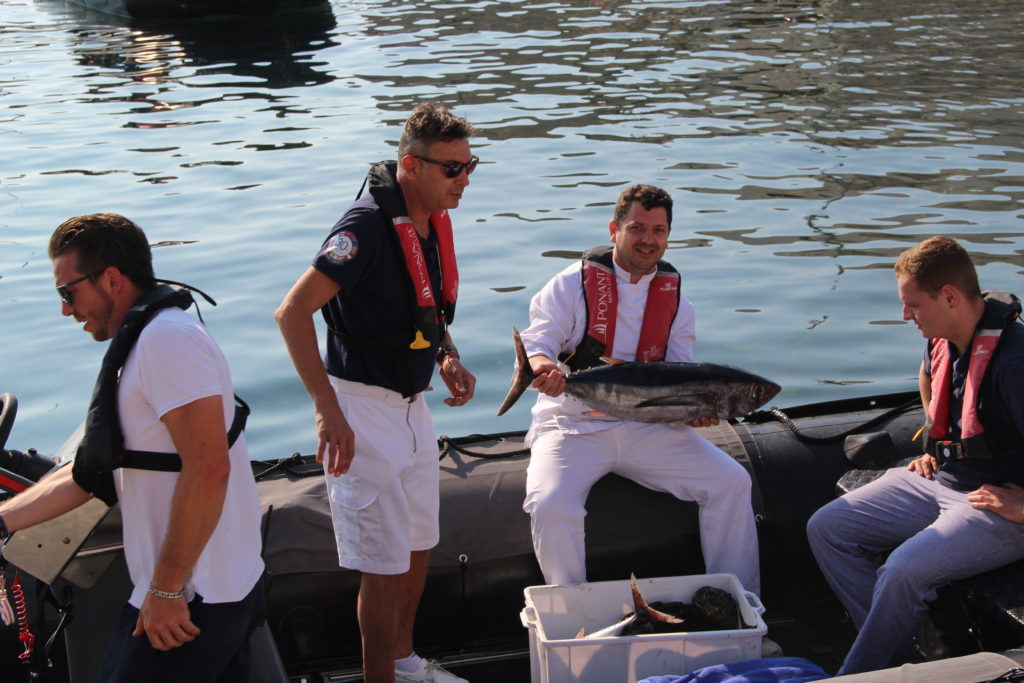
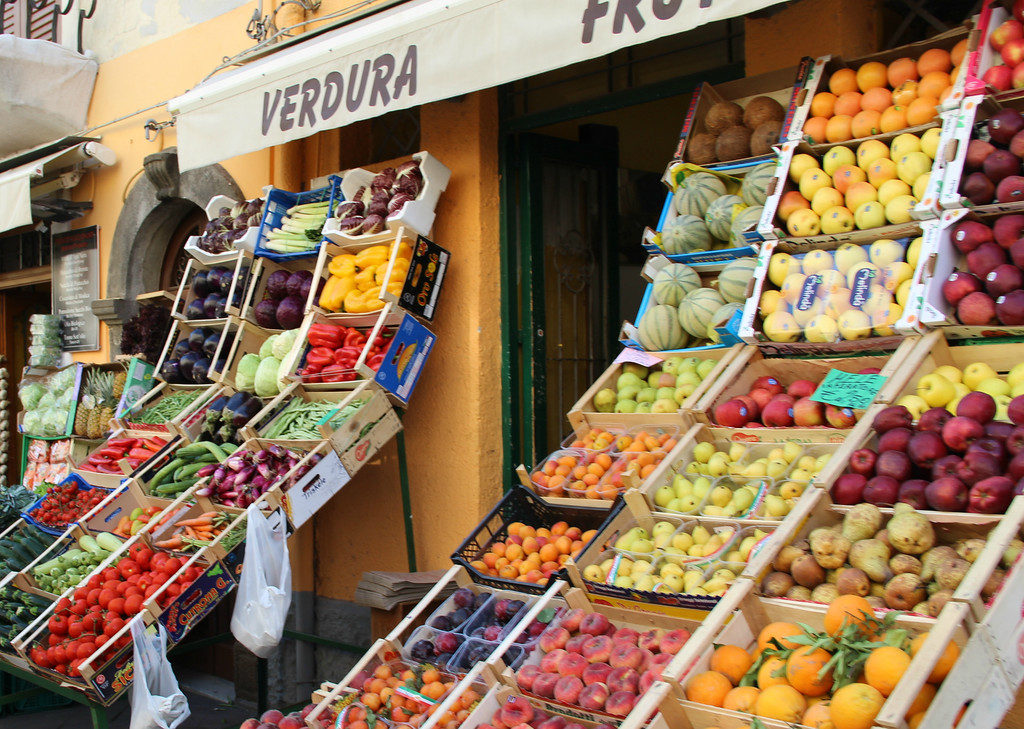
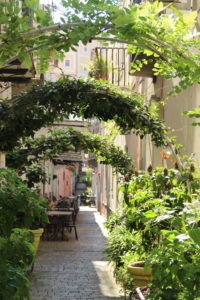
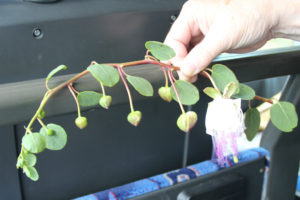
After we walked around the town, we also took a bus tour. The first three pictures below were taken at a scenic overlook. The tall plant is a century plant which blooms every 100 years. They are not native to the area. Lipari is not visited by the very large cruise ships which makes it a quieter and more peaceful destination.
We also saw the citadel depicted in the fourth picture. Throughout history, Lipari was attacked and conquered by many different entities. One of the worst attacks was in the mid 1500’s when Turkish pirates killed many people and transported most of the others out of Lipari to serve as slaves. Some time after this, the Spanish came from Sicily and resettled Lipari. The citadel was built around the center of the town for protection. Although the city has moved down and outside the walls, much of the citadel remains.
The last picture shows the remains of a pumice mine. Pumice mining was a major industry in Lipari and exported to many parts of the world. When the Aeolian Islands became a UNESCO World Heritage Site in 2000, there was decision to close the mines by May of 2005. Many people would lose their jobs and the mining continued. The police finally ordered the mine to close in 2007. People literally walked off the job, leaving equipment and tools behind.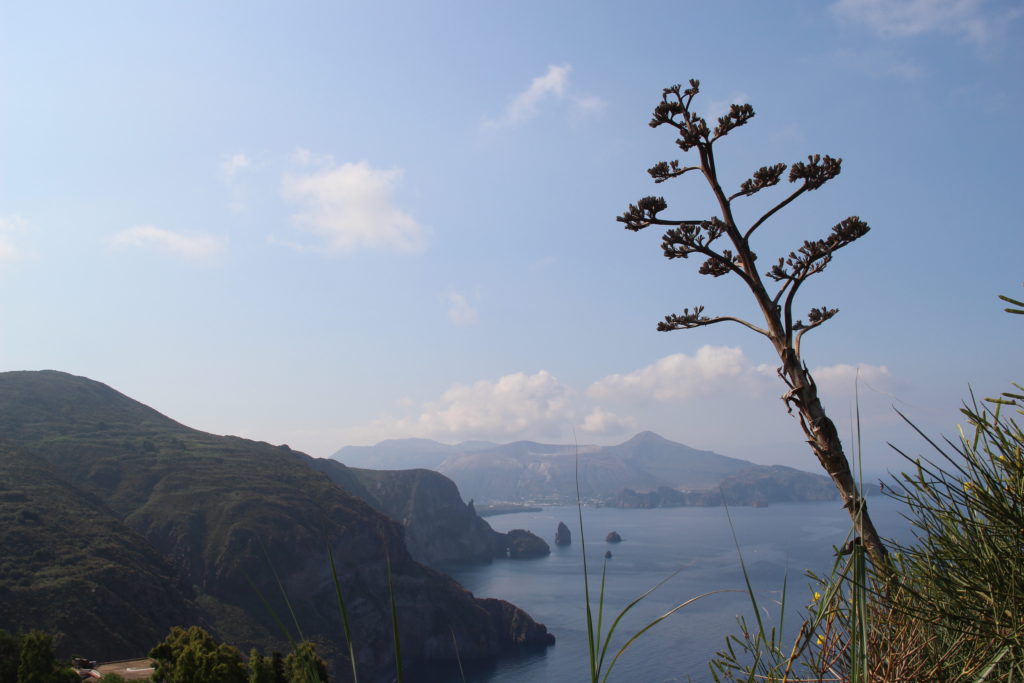

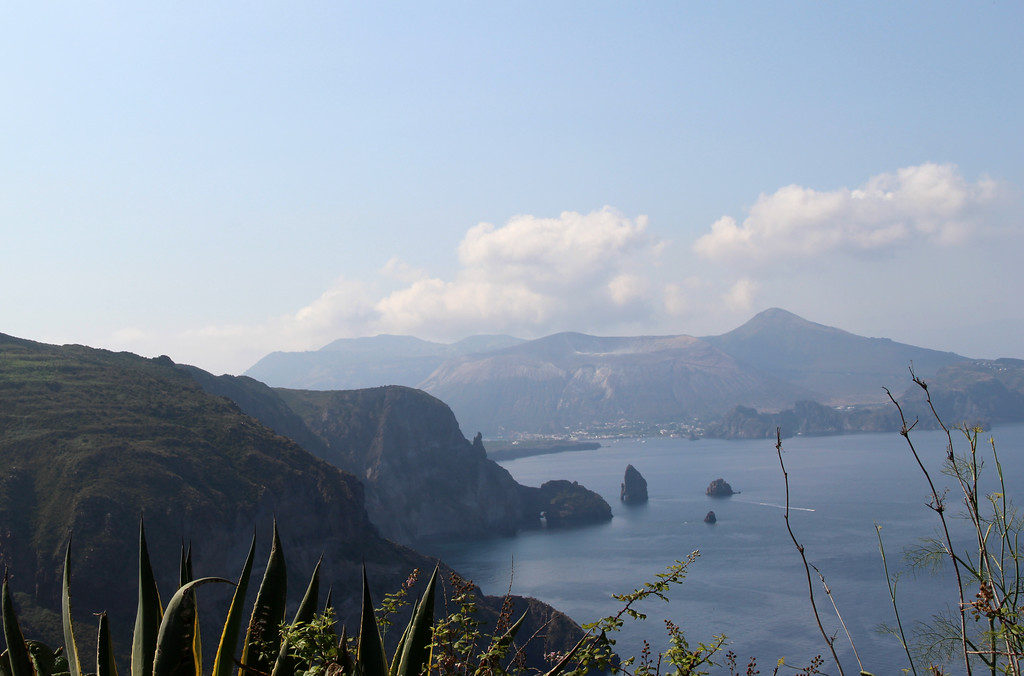
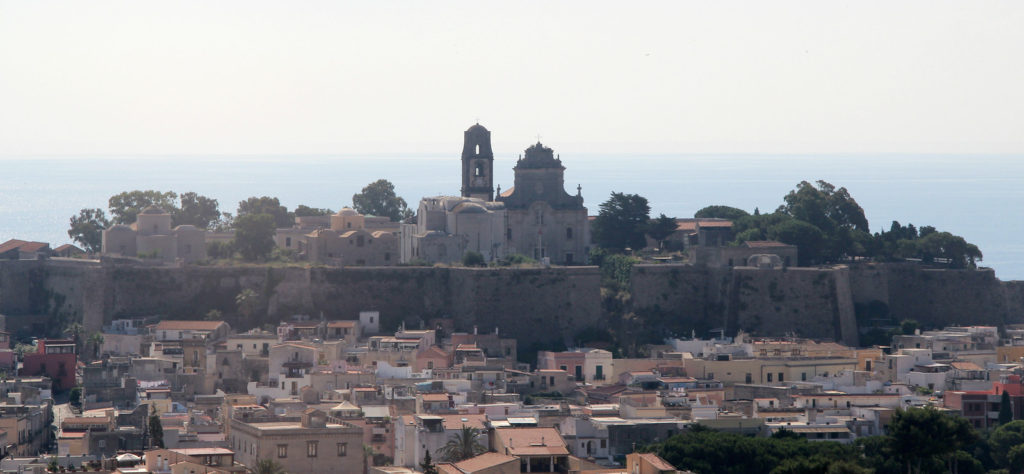

After we were back on board the Le Ponant, the ship circled back to Stromboli. Stromboli is also part of the Aeolian Islands and is part of same UNESCO World Heritage Site as Lipari. Once near Stromboli, we were able to leave the ship via zodiacs so we could take pictures of the ship with its sails in the wind. In the pictures below, you will see a zodiac being boarded, the Le Ponant in all of its glory, and my husband and I with the ship in the background.
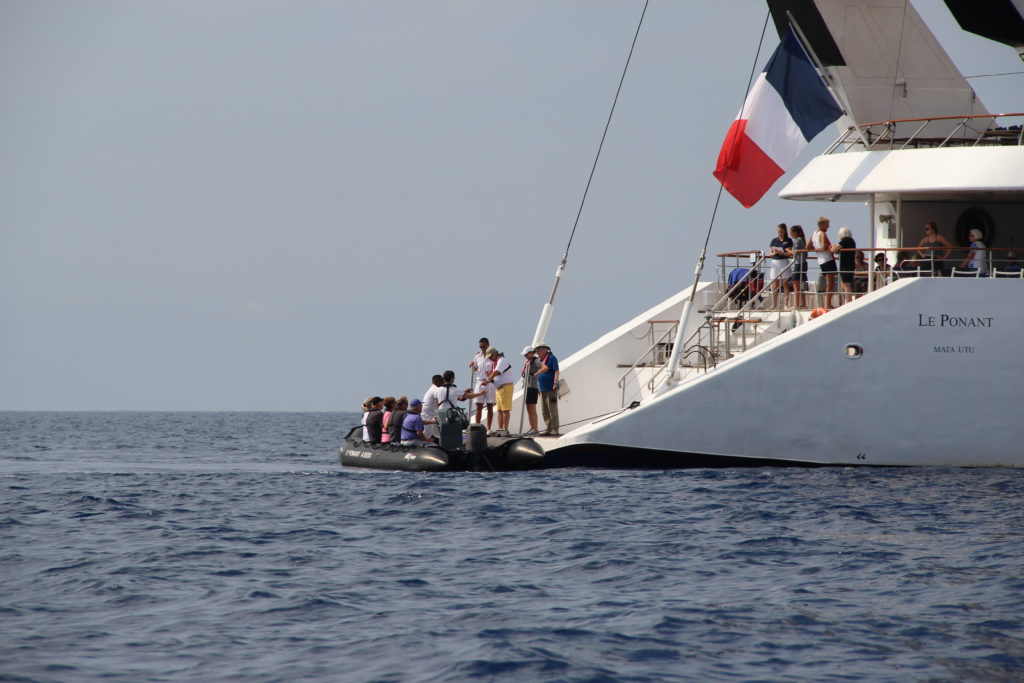
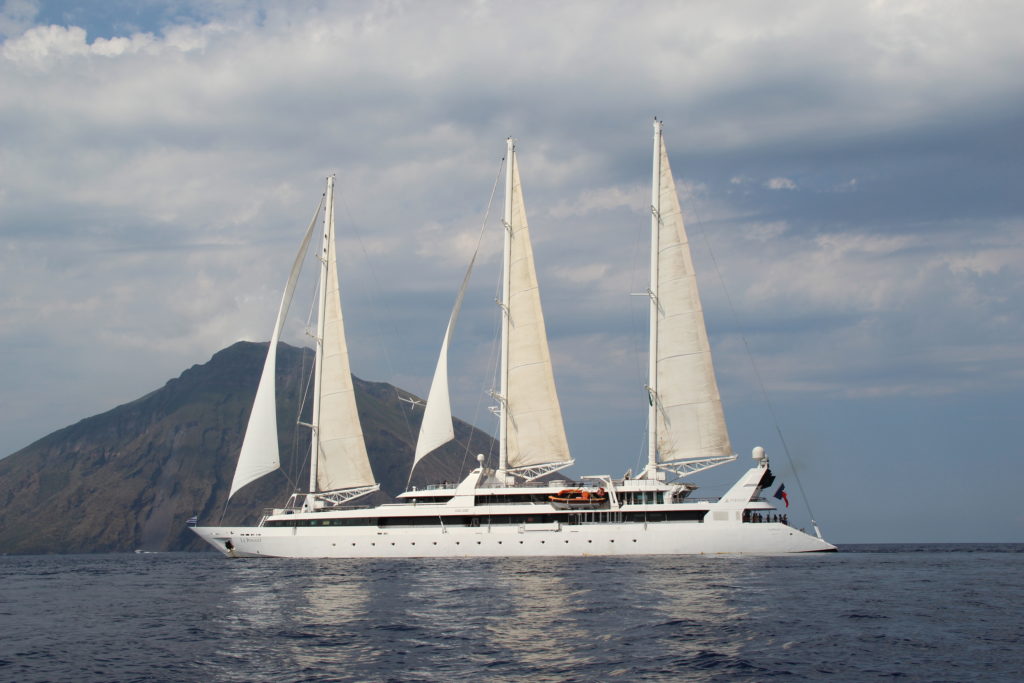

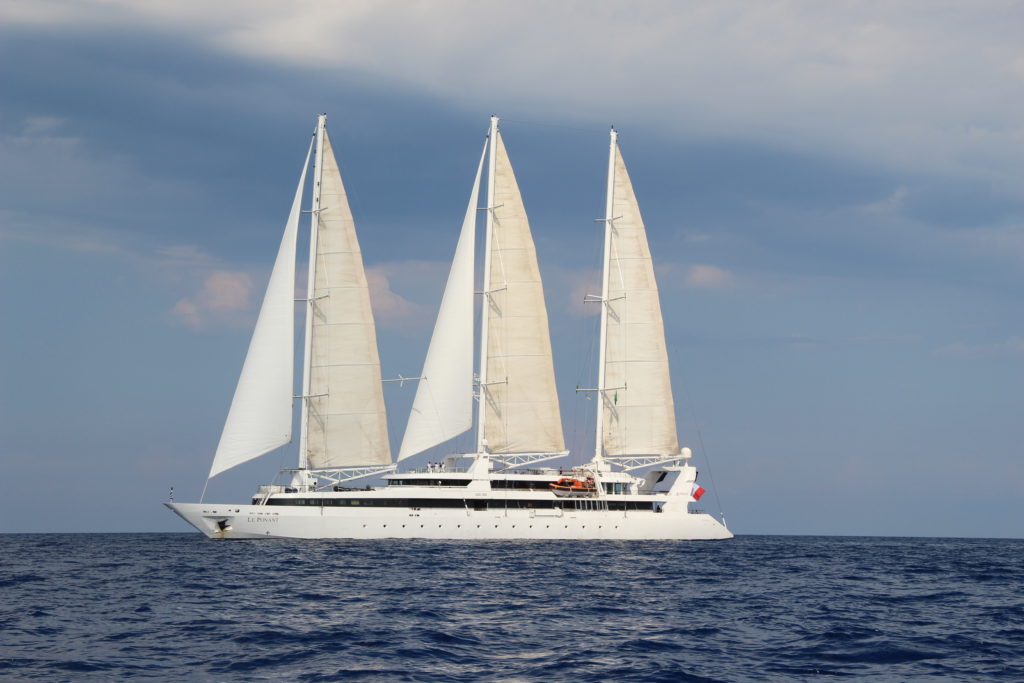
And while we didn’t see lava, Stromboli was finally putting on a show! Stomboli has had small explosions of smoke, and sometimes lava, over the past 2,000 years. When a volcano has small, regular eruptions such as these, they are now called the stromboli effect. Most of Stromboli’s eruptions are small and characterized by billowing smoke. Lava eruptions are irregular and can be separated by several years. From what I could find, the last major eruption was in 2003. When they happen they can be spectacular – Stromboli is known as “The Lighthouse of the Mediterranean.” The pictures below are ones we took from the zodiac. You can also see evidence of large lava flows where there is no vegetation on the island (fourth and fifth picture). Finally, I have included a picture I purchased from Shutterstock that shows Stromboli erupting at night with a beautiful lava flow.

